Try the on-orbit coffee cup that can show how Pettit’s innovative design can change a simple coffee mug into an exceptional piece. This inventive coffee cup concept came to Donald Pettit’s mind, who is an astronaut, during the mission STS-126. Instead of using a straw to drink his morning coffee inside a heated aluminum bag, Donald created a cup that could hold liquid in zero gravitation. Travis Baldwin tried to offer his service as a designer to assist him in developing his idea into a real product.
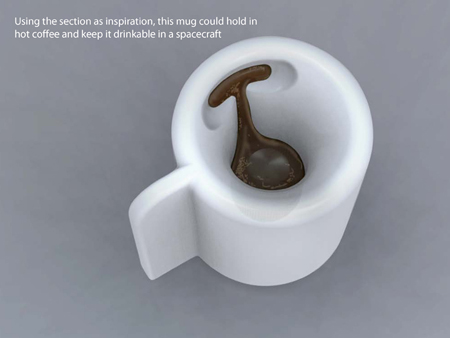
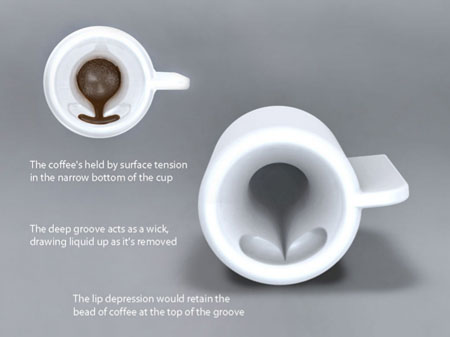
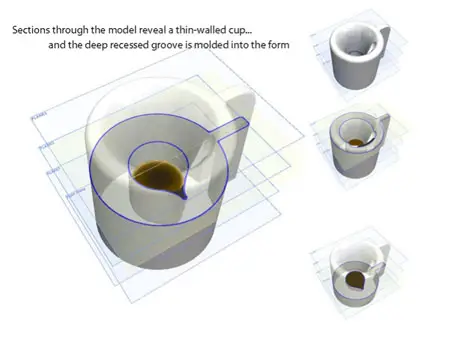
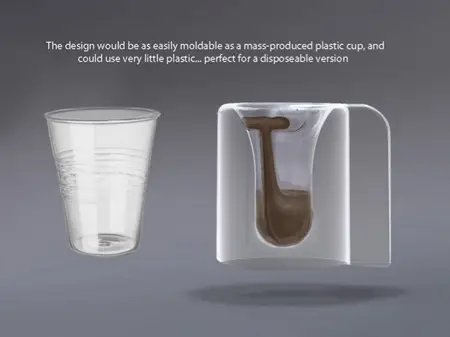
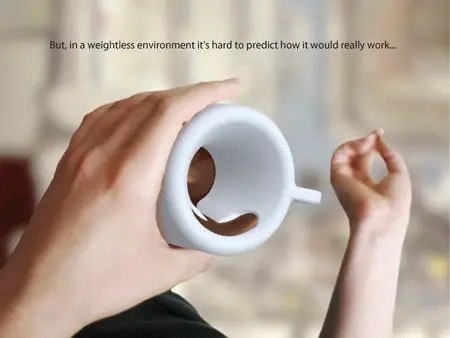
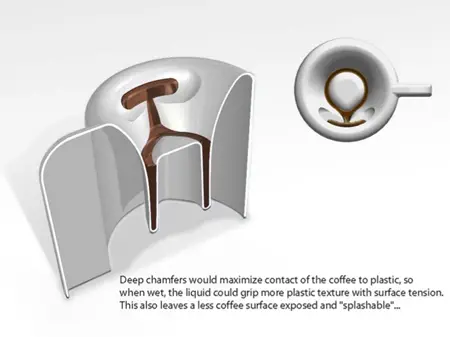
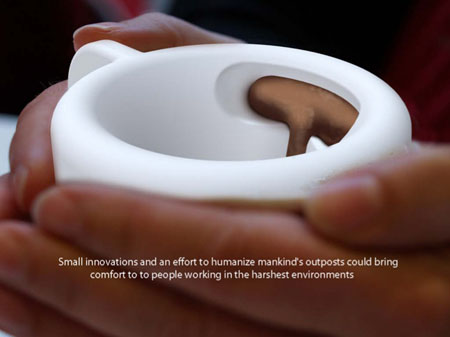
Designer : Travis Baldwin
*Some of our stories include affiliate links. If you buy something through one of these links, we may earn an affiliate commission.






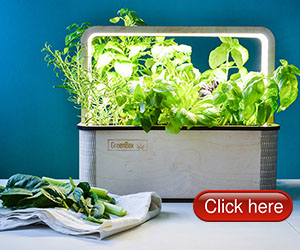

Should be relatively easy to fab a test article and test it on an upcoming ZeroG flight (http://www.gozerog.com/). I'm planning to fly on them again and do some high-speed liquid videography, and this might dovetail nicely into that plan.
One issue I see is with the chamfers; they'd be hard to clean.
For me my morning java is all about the java, not the ability to slurp it. From my perspective the worst thing about this design is that you get maybe 2 sips and you're done. I like my 16 oz mug. Give it a sippee cup lid or a straw and I'd be set.
I recognized that shape immediately!
Check out a video of this principle in space:
http://philharnish.tumblr.com/post/61782713/astro…
Very nice work Travis!!
As for cleaning,, hmm, that's a toughie.
Also I was wondering about a concentric spiral with a straw sized central dot for "filling" rather than just the round so that it could be center filled then flushed with water in the center. Also, mounting a magnet in the base (just a little one) you could easily secure it to a bulkhead to keep a cup with you (or velcro).
Great bit!
i hope coffee cups wont look like that in the future
This is important work. Considering how much we waste on the space program, we don't want sleepy astronauts. Coffee has gotten much better but most coffee cups are still of archaic design. Drinking coffee, or anything for that matter, through a straw does not give the full sensory experience, as odor vapors entering through the nostrils are an important component of flavor.
hey! is it sell anywhere? how much is it?
hey! is it sell anywhere? how much is it?
Hi Travis,
Could you tell me if you're selling this cup ?
Thanks & regards
how much is it? i want to buy
how much is it? i want to buy
its unnecessary idea.. wasting time..
I think this design is very cool!! If it's possible, I want to get that kind of cup for my coffee~~~ Drinking will be more interesting!
why not simply make a covered container design?… what a stupid idea
because you wouldn't be able to drink from it, the cleverness lies in that sharply angled part which wicks the fluid to the edge so you can drink it. (otherwise the fluid would just merrily sit at the bottom and not come out)
and besides if you had to spend months on end having to drink from plastic bags, wouldn't you want to design an alternative?
My first problem with it is that the drawings appear to show very little actual space for coffee. Whether I am on Earth or in space, I drink a lot of coffee, not just an ounce or two. Second, someone said this would be better than drinking from a straw, because you could get the aroma of the coffee. Think about that a moment. The reason this cup was designed this way was to minimize the free surface area. That means there is very little aroma escaping.
Most of you have tried drinking hot fluids (coffee, tea, cocoa) through a straw and were less than impressed, however, if it matter of having a full "cuppa" versus only getting an ounce or two at the most, I will use the straw or the insulated bag method or even a "sippy cup" like babies use. They all work in microgravity.
Soon as they build a proper, wheel-style ship or space-station that rotates to give artificially induced gravity, regular cups will suffice anyway.
Little note to Don Pettit: With the introduction of the 3D printer concept to the ISS, it will be easy to perfect a design that will work better. Sure, that raw plastic is for making important spare parts, etc. but what is more important than our coffee…? (ha ha ha) It is going to have to have the bugs worked out in microgravity, not here on Earth, so they better send us lots of raw plastic for our important research into a perfect cuppa. 🙂 I'm sure you've tried the floating ball of coffee trick, right?